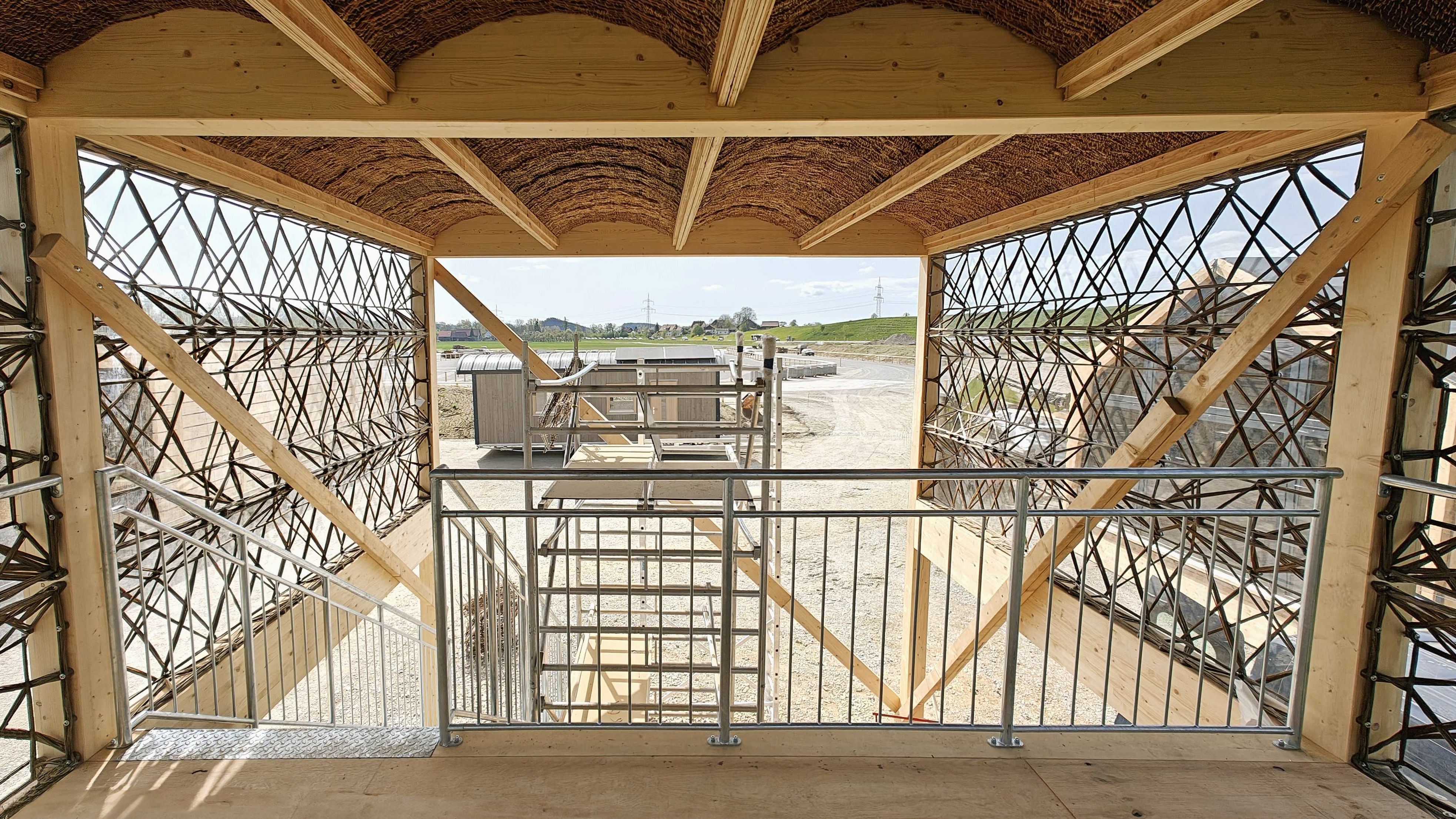
Emissions in the construction sector are increasing and so are the costs of raw materials. Circular economy and more sustainable architecture will require innovative approaches. Architects of Karlsruhe Institute of Technology (KIT) combine digital design and fabrication strategies with historical architecture and novel materials based on natural resources. In their demonstration project, researchers and students reinterpreted half-timbered houses: Their combination of wood and willow-clay composites will be presented at the Landesgartenschau (state garden show) that will take place at Wangen im Allgäu from April 26 to October 6, 2024.
"The construction sector produces more than 40 percent of all CO2 emissions worldwide, air traffic just 2 to 3 percent," says Moritz Dörstelmann, Tenure-track Professor for Digital Design and Fabrication at KIT's Institute for Building Design and Technology. His international and interdisciplinary team digitally rethinks historical craftmanship. "We do not just automate and digitalize, but develop entirely new construction methods."
Reinterpreted Half-Timbered Houses Enable Circular Economy in the Construction Sector
"One of our demonstration projects covers a hybrid wooden carrier structure combined with ceiling parts based on a willow-clay composite. The façade is made of flax fibers," Dörstelmann explains. "This intelligent mix of local, rapidly regenerating materials, earth, and wood is used for construction purposes." Digital construction technologies are applied to upscale these natural construction materials to high-performance components. With his team, Dörstelmann developed digital design and automated fabrication methods for structural components based on the willow-clay composite.
The researchers also study the material flow for the use of willow as a construction material. Their approach is to restore swamps and to grow willows there. "Both the restored swamps and the rapidly growing willows will store large amounts of CO2," Dörstelmann says. "This will enable low-energy processing of local material and diversify the use of renewable resources in the construction sector."
Research-based Teaching: Students Are Involved in All Project Phases
Dörstelmann encourages his students to participate actively in all project phases. Students are involved in the finding of ideas and in the concept phase already. "In the beginning, we are very open for new ideas as to which circular and digital construction methods might be used. Students contribute entirely new perspectives," says the Professor of Architecture, who was granted the State Teaching Award in the category of Innovation/Transformation in 2023. Then, students help revise new concepts, generate digital models, and develop 1:1 prototypes.
Demonstration Project of KIT at the State Garden Show
From April 26 to October 6, 2024, Moritz Dörstelmann and his team will present the demonstration project at the State Garden Show in Wangen im Allgäu.
More information on the Tenure-track Professorship for Digital Design and Fabrication at KIT
Video in German on the State Teaching Award for Moritz Dörstelmann
Press Release of KIT on the State Teaching Award for Moritz Dörstelmann
Being "The Research University in the Helmholtz Association", KIT creates and imparts knowledge for the society and the environment. It is the objective to make significant contributions to the global challenges in the fields of energy, mobility, and information. For this, about 10,000 employees cooperate in a broad range of disciplines in natural sciences, engineering sciences, economics, and the humanities and social sciences. KIT prepares its 22,800 students for responsible tasks in society, industry, and science by offering research-based study programs. Innovation efforts at KIT build a bridge between important scientific findings and their application for the benefit of society, economic prosperity, and the preservation of our natural basis of life. KIT is one of the German universities of excellence.






